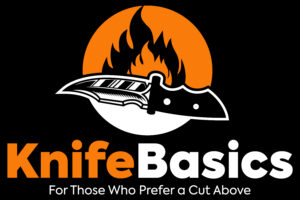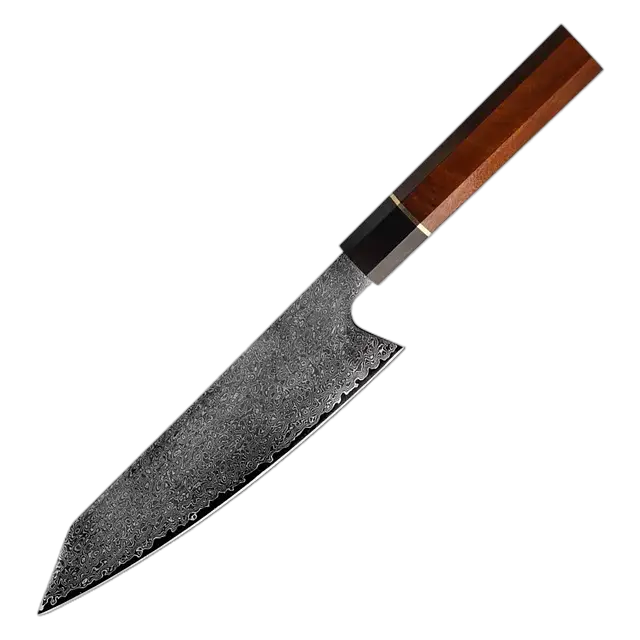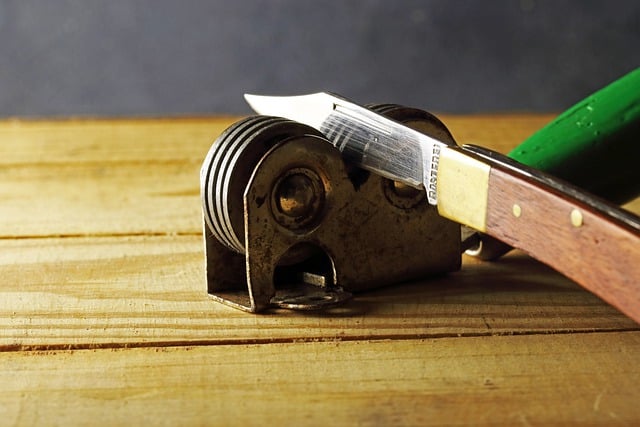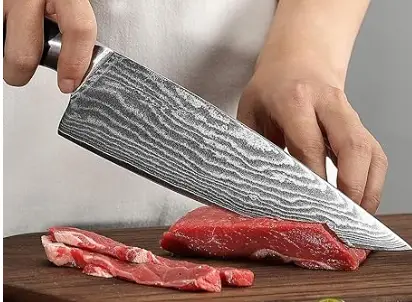Crafting exceptional blades requires more than just skill and technique. It all comes down to the right choice of knife-making steel. In this article, we delve deep into the world of knife making steel, unlocking its power and revealing the secrets to creating remarkable blades.
With the right steel, a blade can become an extension of the craftsman’s hand, effortlessly slicing through any material with precision and ease. From high-carbon steels to stainless steels, each type offers distinct properties that affect the blade’s performance, durability, and sharpness.
We explore the characteristics of different knife-making steels, guiding you through their composition, hardness, and corrosion resistance. Whether you are a seasoned blade enthusiast or a novice in the art of knife making, this article will equip you with the knowledge to make informed decisions about the type of steel suitable for your desired blade.
Join us as we uncover the intricate world of knife-making steel, unlocking its potential and empowering you to create blades that stand head and shoulders above the rest. Get ready to unleash the power of knife-making steel and take your blade-making skills to new heights.

Different types of knife making steel
When it comes to knife making, there are various types of steel to choose from. Each type has its own unique composition and characteristics that make it suitable for different applications. Here are some of the most common types of knife making steel:
1. High-Carbon Steel: Known for its exceptional hardness and edge retention, high-carbon steel is ideal for creating razor-sharp blades. However, it is also prone to corrosion and requires regular maintenance to prevent rusting.
2. Stainless Steel: Stainless steel is a popular choice for knife making due to its excellent corrosion resistance. It is easy to maintain and is less prone to rusting compared to high-carbon steel. However, stainless steel blades may not hold an edge as well as high-carbon steel blades.
3. Tool Steel: Tool steel is known for its exceptional toughness and wear resistance. It is commonly used for heavy-duty applications where the blade needs to withstand a lot of abuse. Tool steel blades can be more challenging to sharpen compared to high-carbon or stainless steel blades.
4. Damascus Steel: Damascus steel is renowned for its beautiful patterns and exceptional strength. It is created by forging together multiple layers of different types of steel. Damascus steel blades are highly prized for their aesthetic appeal and cutting performance.
Properties and characteristics of knife making steel
The performance of a blade depends on the properties and characteristics of the knife-making steel used. Here are some key factors to consider:
1. Composition: The composition of the steel determines its hardness, toughness, and ability to hold an edge. Different elements, such as carbon, chromium, and vanadium, are added to the steel to enhance specific properties.
2. Hardness: Hardness refers to the ability of the steel to resist deformation or indentation. Blades with higher hardness can hold a sharper edge but may be more prone to chipping or breaking.
3. Corrosion Resistance: Corrosion resistance is an important consideration, especially for knives that will be exposed to moisture or acidic substances. Stainless steel is known for its excellent corrosion resistance, making it suitable for outdoor or kitchen knives.
4. Edge Retention: Edge retention refers to how well the blade maintains its sharpness over time. High-carbon steels are known for their exceptional edge retention, while stainless steels may require more frequent sharpening.
Choosing the right knife making steel for your project
Choosing the right knife-making steel for your project involves considering the intended use, maintenance requirements, and personal preferences. Here are some factors to keep in mind:
1. Intended Use: Different types of blades are designed for specific tasks. For example, a chef’s knife requires a steel that can hold a sharp edge for precise slicing, while a hunting knife needs a tough steel that can withstand heavy use.
2. Maintenance: Some steels require more maintenance than others. High-carbon steel blades, for instance, need to be cleaned and dried immediately after use to prevent rusting. Stainless steel blades are more forgiving in terms of maintenance.
3. Personal Preferences: Some craftsmen have their own preferences when it comes to steel types. Experimenting with different steels can help you discover the ones that suit your style and desired performance.
Heat treatment and tempering of knife making steel
Heat treatment and tempering are crucial steps in the knife-making process that significantly affect the performance and characteristics of the blade. Here’s a brief overview of these processes:
1. Heat Treatment: Heat treatment involves heating the steel to a specific temperature and then rapidly cooling it to achieve the desired hardness. This process helps to refine the steel’s grain structure and enhance its toughness.
2. Tempering: Tempering is the process of reheating the hardened steel to a lower temperature and then slowly cooling it. This step reduces the hardness of the steel to a more desirable level, making the blade less brittle and more durable.
Common mistakes to avoid when working with knife making steel
Working with knife-making steel requires precision and attention to detail. Here are some common mistakes to avoid:
1. Improper Heat Treatment: Inadequate heat treatment can result in a blade that is either too soft or too brittle. It is essential to follow proper heat treatment protocols to achieve the desired hardness and toughness.
2. Overheating: Overheating the steel during the forging process can lead to grain growth and a weaker blade. It is crucial to monitor the temperature closely and avoid excessive heat.
3. Incorrect Grinding Techniques: Improper grinding techniques can affect the blade’s geometry and compromise its performance. It is important to use the right tools and maintain a consistent angle while grinding the blade.
Techniques and tools for working with knife making steel
Working with knife-making steel requires the right techniques and tools to achieve the desired results. Here are some essential techniques and tools for working with knife-making steel:
1. Forging: Forging involves shaping the steel by heating it and hammering it into the desired shape. This process helps to refine the steel’s grain structure and enhance its strength.
2. Grinding: Grinding is essential for shaping and sharpening the blade. It involves using abrasive belts or wheels to remove material and achieve the desired blade profile.
3. Heat Treatment Equipment: Proper heat treatment requires specialized equipment, such as a heat-treating oven or kiln, to achieve consistent and controlled results.
Knife making steel suppliers and brands
Finding high-quality knife-making steel is crucial for creating exceptional blades. Here are some reputable suppliers and brands known for their quality steel:
1. Crucible Industries: Crucible Industries is a renowned supplier of high-quality knife-making steels, including CPM S30V and CPM 3V.
2. Carpenter Technology Corporation: Carpenter Technology Corporation offers a wide range of specialty alloys, including CTS-XHP and CTS-BD1N, which are popular choices among knife makers.
3. Bohler-Uddeholm: Bohler-Uddeholm is a trusted brand known for its high-performance steels, such as Bohler M390 and Bohler K390.
Examples of exceptional blades made with high-quality knife making steel
High-quality knife-making steel can elevate a blade’s performance to new heights. Here are some examples of exceptional blades made with high-quality knife-making steel:
1. The Chris Reeve Sebenza: The Chris Reeve Sebenza is a legendary folding knife known for its exceptional build quality and performance. It is crafted from high-quality stainless steel, such as S35VN or CPM S45VN.
2. The Benchmade Griptilian: The Benchmade Griptilian is a versatile folding knife that features a high-quality blade made from stainless steel, such as 154CM or CPM S30V.
3. The Morakniv Companion: The Morakniv Companion is a popular fixed-blade knife that boasts a high-carbon steel blade, such as Sandvik 12C27 or 1095 carbon steel.
Conclusion: The importance of knife making steel in creating exceptional blades
In conclusion, the choice of knife-making steel plays a pivotal role in creating exceptional blades. The properties and characteristics of the steel directly impact the blade’s performance, durability, and sharpness. By understanding the different types of knife-making steel, their properties, and how to work with them, craftsmen can unlock the full potential of their blades.
Whether you are a seasoned blade enthusiast or a novice in the art of knife making, this article has equipped you with the knowledge to make informed decisions about the type of steel suitable for your desired blade. By unleashing the power of knife-making steel, you can take your blade-making skills to new heights and create blades that stand head and shoulders above the rest. So, go forth, explore the intricate world of knife-making steel, and craft blades that leave a lasting impression.



